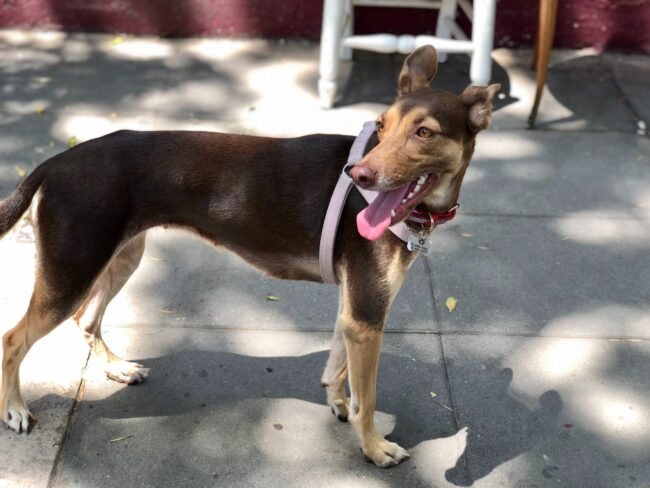Table of Contents
Have you ever noticed a tumor-like rib in your dog that sticks out? Well, most pet owners mistake this rub for a broken rib or a fractured part. Contrary to what people believe, some dogs have floating ribs that look like tumors or a big bump under the dog’s skin.
Most breeds of dogs have a total of 26 ribs. These 13 pairs of ribs that are connected to the sternum and sternal protect the vital organs of the dog. They protect your dog from unpredictable attacks and mishaps.
While almost all breeds have floating ribs, they are quite obvious in Dachshunds. Floating ribs are not harmful. They are rather commonly found in young dogs. Keep reading to learn more about this last pair of the dog’s ribs and how they get the unique lump-like appearance.
Floating Ribs – The Natural Characteristics of Dogs
Surprisingly, a floating rib is the natural characteristic of a dog. These are considered to be the last pair of ribs in dogs. What sets them apart from other pairs of ribs is their unique lump-like appearance. They stick out on one side of the dog’s lean frame. The floating ribs, unlike other pairs of ribs, are not connected to the sternum. They are rather attached directly to the spine.
The tumor-like protrusion that is visible on the dog’s frame indicates the floating rib. In fact, this is where the last pair of dog ribs end. While floating ribs are absolutely safe and normal in nearly every breed of dog, it is a good idea to check any unusual protrusion with the veterinarian.
Certain illnesses and accidents can affect the rib cage structure of your dog. There is also a chance the protrusion may indicate a serious issue. If your dog has been experiencing rib pain and discomfort around the ribcage, then that’s probably a sign they have a broken rib or a complex issue. The vet might run a series of tests and X-rays on your dog to detect the underlying issue.
The seven pairs of dog ribs are connected directly to the sternum. These ribs are referred to as the “true ribs”. The last pair or floating ribs in the dogs are connected to the spine, but this pair is not attached to the sternum. Floating ribs get their name from the fact that they are not attached to the frontal cartilage.
Know The Difference Between A Broken & Floating Rib
It is quite common for people to mistake this protrusion for a serious issue (mostly, tumor) in their dogs. In fact, many pet owners rush their dogs to the vet specialist to get the issue diagnosed as early as possible. While that’s a good step, know that the floating rib does not harm your dog or it doesn’t indicate any abnormality.
For pet owners, it may seem a little challenging to tell the difference between a floating rib and a broken rib. Note that any serious injury to your dog’s bone is a critical condition that must be checked and treated immediately. They are extremely painful. The sharp ends of the broken ribs can damage your dog’s lungs, which can be fatal.
The broken rib is quite similar to the floating rib. If your dog has broken its bone in a fight or an accident, then it will protrude on one side (just like the floating rib). Usually, dogs with a broken rib experience severe and sharp pain. The protrusion is more visible in some breeds than others.
Dog Floating Rib Treatment
There is no treatment for floating ribs in dogs. As it is a normal characteristic of a dog, the floating rib does not need treatment. However, if the protrusion turns red or is painful, then you must contact a specialist immediately.
The last pair of ribs in dogs does not connect to anything at all, thus giving their cartilage a weird and funny appearance. It isn’t painful to touch. However, it is movable.
Floating ribs are not a cause of concern, but it is best to get your dog to a veterinarian to confirm that it is the last pair of ribs that is protruding on one side. In some dogs, the large bump sticking out through the skin will fade as your dog ages. However, it doesn’t disappear completely.
Dog Broken Rib Lump
Bone dislocation and broken ribs in dogs occur when your pet falls or gets hit by a vehicle. If the fracture is intense, the broken bones will be clearly visible through your dog’s skin.
In some cases, the fracture could break the bones but may not affect the skin. The most common sign of the broken bone in a dog is the tumor-like lump protruding through the skin.
If your dog has met with an accident or suffered a serious injury to their cartilage, then there is a high chance they will have fractured bones. If your dog is whining after an accident, call a vet right away. Do not apply any ointment or antiseptic if the wound is visible through the dog’s skin.
Broken ribs have the same lump as the floating rib of a dog. As we discussed above, the latter does not cause any pain. The bulging chest could indicate a severe injury to the dog’s rib cage. Whether it is a bone dislocation or a fractured rib, do not attempt DIY remedies.


